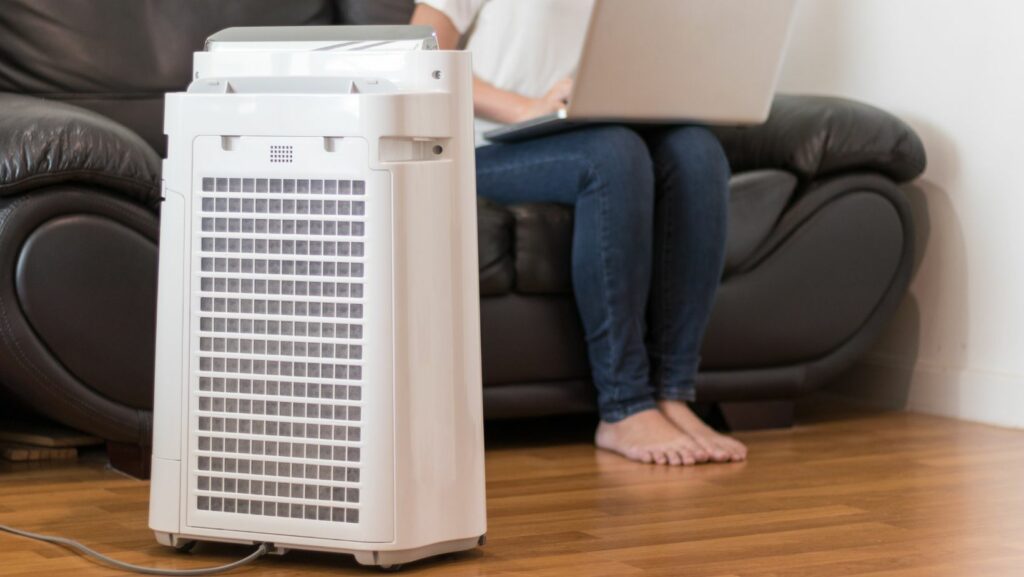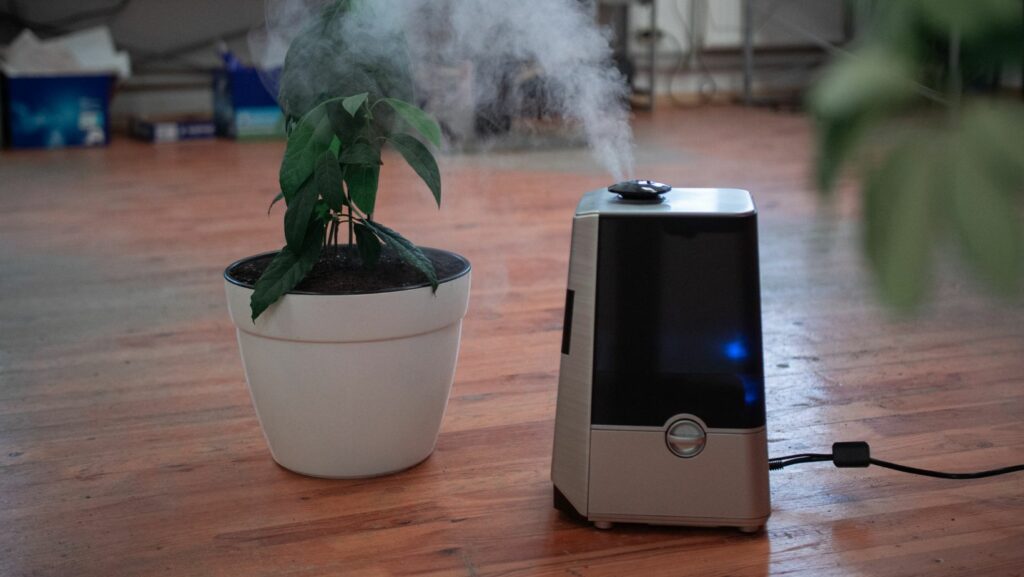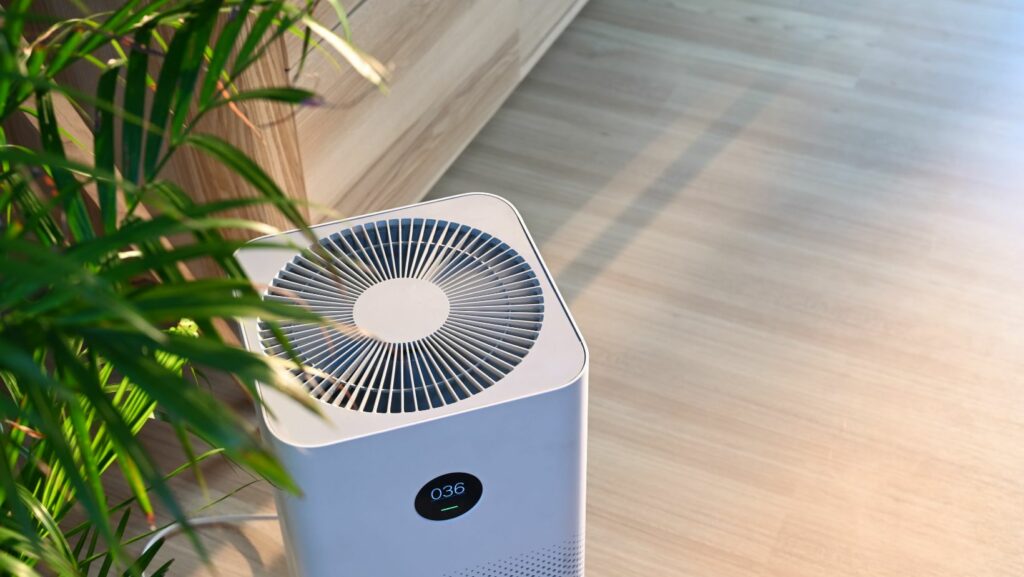An air purifier or air cleaner is a device which removes contaminants from the air in a room. These devices are commonly marketed as being beneficial to allergy sufferers and asthmatics, and at reducing or eliminating second-hand tobacco smoke. Air purifiers are also used in industries where dust particles, dangerous gases and fumes need to be extracted from the air.
Air purifiers come in many different types, each with their own advantages and disadvantages. Some air purifiers are designed for specific purposes, while others are more general purpose. The type of air purifier you choose will depend on your needs and the specific features you are looking for.
Central Air Purifiers
There are two types of central air purifiers: those that work with your HVAC system and those that act as a standalone unit. Central air purifiers that work with your HVAC system are the most popular type. These units are installed in your ductwork and purify the air as it’s circulated throughout your home. The second type of central air purifier is a standalone unit. These devices are not connected to your HVAC system and therefore must be placed in the room where you want the air to be purified.

Portable Air Purifiers
Portable air purifiers are small, lightweight, and can be moved from room to room. They’re a good choice if you have allergies or asthma and want to reduce the amount of allergens and pollutants in your home. Some portable air purifiers come with built-in HEPA filters that can remove 99.97% of airborne particles as small as 0.3 microns, such as dust mites, pollen, pet dander, and mold spores.
Whole-House Air Purifiers
A whole-house air purifier is placed in the main air return duct of your home’s HVAC system. As air is pulled through the return duct and into the air purifier, contaminants are removed from the airstream. The purified air is then distributed throughout your home through the supply duct and registers.
There are several types of whole-house air purifiers on the market, and each type uses a different technology to clean the airstream. The most common types of whole-house air purifiers are mechanical filters, activated carbon filters, ozone generators, and ultraviolet germicidal irradiation (UVGI) systems.
Mechanical filters are perhaps the most common type of whole-house air purifier. They work by using a combination of an electrically charged grid or panel and a fan to pull air through the filter media. The filter media is usually made of fiberglass or another material that can capture small particles like dust, pollen, and mold spores.
Activated carbon filters work by adsorbing contaminants from the airstream as it passes through the filter media. Activated carbon is a type of carbon that has been treated to create a large number of tiny pores that can adsorb contaminants from the airstream.
Ozone generators produce ozone, a gas that can remove contaminants from the airstream as it passes through the unit. Ozone is a powerful oxidizer that can break down molecules like viruses, bacteria, and molds.
UVGI systems use ultraviolet light to kill or inactivate microorganisms like viruses, bacteria, and mold spores as they pass through the unit.
HEPA Air Purifiers
HEPA Air Purifiers are the most effective type of air purifier on the market. HEPA stands for High Efficiency Particulate Air, and these filters can remove up to 99.97% of all particles in the air, including dust, pollen, smoke, and other allergens.
Despite their effectiveness, HEPA air purifiers can be expensive, and they often require professional installation. They also need to be replaced regularly in order to keep working properly.
If you’re looking for an air purifier that will remove the vast majority of allergens from your home, a HEPA air purifier is the best option.
UV Air Purifiers
UV air purifiers are devices that help clean the air by using ultraviolet light. This type of air purifier is often used in hospitals and other healthcare facilities to kill bacteria and viruses. Some UV air purifiers are also designed to remove smoke, odors, and VOCs (volatile organic compounds) from the air.

UV air purifiers work by drawing in air and then passing it through a UV light. The UV light kills or eliminates the contaminants in the air, making it safer to breathe.
There are two main types of UV air purifiers: portable and whole-house. Portable UV air purifiers can be used in a single room or placed in an HVAC system to purify the entire home. Whole-house UV air purifiers are typically installed as part of an HVAC system and can purified the entire home at once.
How to Choose the Right Air Purifier for Your Home
When it comes to choosing an air purifier, it’s important to select the right unit for your specific needs. There are many different types of air purifiers on the market, so how do you know which one is right for you? Here’s a look at the different types of air purifiers and what they can offer you.
Consider the Size of Your Home
dusty, and full of particles that can aggravate allergies and respiratory conditions. But not all air purifiers are created equal—and if you want one that will actually make a difference in your home, you need to choose the right type for the job.
The first step is to understand the different types of air purifiers on the market. Hospital-grade options use HEPA (high efficiency particulate air) filters to remove 99.97 percent of particles from the air, making them ideal for people with severe allergies or respiratory conditions. But these units can be expensive, and they’re not always necessary.
For most homes, a less expensive option like an activated carbon filter will do the trick. These filters are especially good at removing common household odors like smoke, cooking smells, and pet dander. If you have allergies, look for an air purifier that also uses a pre-filter to capture larger particles like dust and pollen.
Once you’ve decided on the type of air purifier you need, the next step is to choose the right size for your home. Most manufacturers list the square footage that each unit can effectively purify—usually between 100 and 1,000 square feet. It’s important to choose a unit that’s powerful enough to clean the air in your entire home, but not so powerful that it creates too much noise or uses too much energy.
Another consideration is where to place your air purifier. For maximum efficacy, place it in the room where you spend the most time—typically the living room or bedroom. And be sure to keep doors and windows closed when it’s running, so it doesn’t have to work overtime to clean outdoor pollution from your indoor air.
Consider the Air Quality in Your Home
The type of air purifier you need depends on the quality of the air in your home. The three main types of air purifiers available on the market today are mechanical filters, activated carbon filters, and ozone generators.
– Mechanical filters are the most common type of air purifier. They work by trapping particles in a mesh screen as air passes through.
– Activated carbon filters are effective at removing airborne pollutants such as smoke, fumes, and chemicals.
– Ozone generators emit ozone gas, which is effective at killing bacteria and viruses.
Consider Your Budget
The cost of an air purifier depends on the type of air purifier, the size of the unit, and the features it offers. A simple mechanical filter starts at around $50, while an ultraviolet germicidal irradiation (UVGI) system can cost several hundred dollars.
There are many different types of air purifiers on the market, and choosing the right one for your needs can be a challenge. The most common types of air purifiers are mechanical filters, activated carbon filters, ozone generators, and ultraviolet germicidal irradiation (UVGI) systems.
When choosing an air purifier, it is important to consider the size of the unit. The size of the unit will determine the amount of area that it can cover and how often it will need to be replaced.
Before you purchase an air purifier, it is important to consider your needs. Do you have allergies? Are you concerned about airborne contaminants? Do you want a unit that is quiet? Do you need a unit that is portable?
Where to Place Air Purifier
Air purifiers are designed to filter the air in your home and remove dust, pollen, smoke, and other pollutants. But where you place your air purifier is just as important as which air purifier you choose. Keep reading to learn more about where to place your air purifier for the best results.
In the Living Room
The living room is typically the largest room in the house, which means it can take longer for an air purifier to clean the air. Place your air purifier in the corner of the room for maximum efficiency.
In the Bedroom
If you’re having trouble sleeping, or you wake up feeling congested, an air purifier in the bedroom can help. The American Academy of Allergy, Asthma & Immunology recommends placing the unit within 3 feet of the bed so you can breathe easier and sleep soundly through the night.
Air purifiers work by drawing in polluted air and passing it through filters that remove airborne contaminants like dust, pollen, pet dander, smoke and mold spores. Some units also release clean, filtered air back into the room to create a circulation of fresh air.
In the Kitchen
The kitchen is one of the busiest rooms in the house, and it’s also where we prepare and cook food. Because of this, the air in our kitchens can be full of grease, bacteria, and other airborne contaminants.
An air purifier can help to remove these contaminants from the air, making it safer and healthier to breathe. If you have a kitchen that is open to the rest of your home, an air purifier can also help to improve the quality of the air throughout your house.
When choosing an air purifier for your kitchen, look for one that is specifically designed to remove grease and bacteria from the air. Some air purifiers also have filters that can remove smoke and odors from the air, which can be helpful if you do a lot of cooking with strong-smelling ingredients.
In the Bathroom
The bathroom is one of the most important rooms in the house to place an air purifier. This is because the bathroom is full of airborne contaminants, such as mold spores, bacteria, and viruses. An air purifier will help to remove these contaminants from the air, making it healthier for you and your family.
Conclusion
Air purifiers come in all shapes and sizes, but they all have one goal in common: to improve the air quality in your home. While some air purifiers are designed for specific rooms or spaces, others are meant to purify the air in your entire home. No matter what type of air purifier you choose, be sure to place it in an area where it will get plenty of air circulation. This will help ensure that the purifier is able to do its job effectively.



